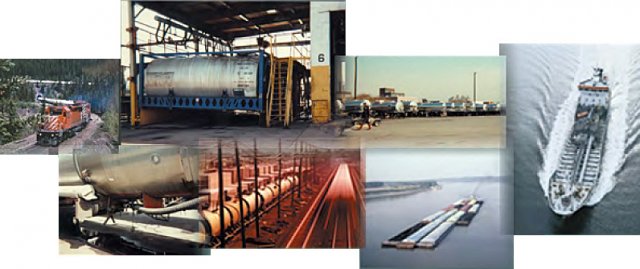Transportation Equipment Cleaning Effluent Guidelines

The TEC Effluent Guidelines are incorporated into NPDES permits for direct dischargers, and through permits or other control mechanisms for indirect dischargers (see Pretreatment Program).
On this page:
- What is Transportation Equipment Cleaning?
- Facilities Covered
- Wastestreams Covered
- Rule History
- Additional Resources
What is Transportation Equipment Cleaning?
Transportation Equipment Cleaning is the cleaning of the interiors of:
- tank trucks
- rail tank cars
- intermodal tank containers (containers with over 3,000 liter capacity)
- tank barges
- closed-top hopper barges, and
- ocean/sea tankers used to transport materials or cargos that come into direct contact with the tank or container interior.
Facilities Covered
The TEC regulation applies to facilities organized into four subcategories:
- Tank Trucks and Intermodal Tank Containers Transporting Chemical and Petroleum Cargos (Subpart A)
- Rail Tank Cars Transporting Chemical and Petroleum Cargos (Subpart B)
- Tank Barges and Ocean/Sea Tankers Transporting Chemical and Petroleum Cargos (Subpart C)
- Tanks Transporting Food Grade Cargos (direct discharging facilities only) (Subpart D)
These activities are included within the following U.S. SIC groups:
- 4491, Marine Cargo Handling
- 4741, Railroad Car Cleaning
- 7699, Repair Shops and Related Services
The TEC rule excludes:
- Facilities that do not clean the interiors of tanks.
- Facilities that clean tank interiors solely for the purposes of repair and maintenance; these facilities may be subject to the Metal Products & Machinery (MP&M) Effluent Guidelines (40 CFR Part 438).
- Wastewaters associated with tank cleanings operated in conjunction with other industrial, commercial, or POTW operations, provided that the cleaning is limited to tanks that previously contained raw materials, byproducts, or finished products that are associated with the facility’s on-site processes.
- Facilities that discharge less than 100,000 gallons per year of TEC process wastewater (only wastewater generated from a regulated TEC subcategory).
- Wastewater generated from cleaning the interiors of drums, intermediate bulk containers (portable containers, also called “totes,” with 450 to 3,000 liter capacity), or closed-top hoppers.
Wastestreams Covered
- All contact washwaters which have come into direct contact with the tank or container interior including pre-rinse cleaning solutions, chemical cleaning solutions, and final rinse solutions
- Wastewater generated from washing vehicle exteriors, equipment and floor washings, and TEC-contaminated wastewater
Rule History
2000 Rule
- Correction Notice (February 1, 2005)
- Final Rule (August 14, 2000)
- Permit Guidance Document: Transportation Equipment Cleaning Point Source Category (pdf)
- Fact Sheet for Final Rule for the Transportation Equipment Cleaning Category (pdf)
- Final Development Document - Transportation Equipment Cleaning Category (pdf)
- Economic Analysis for Transportation Equipment Cleaning Category (pdf)
- Notice of Data Availability (July 20, 1999)
- Proposed Rule (June 25, 1998)
Additional Resources
For additional information regarding the TEC Effluent Guidelines, please contact Erica Mason (mason.erica@epa.gov) or 202-566-2502.
